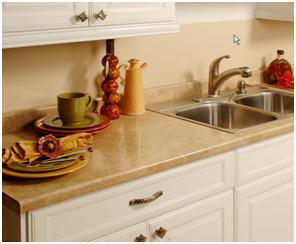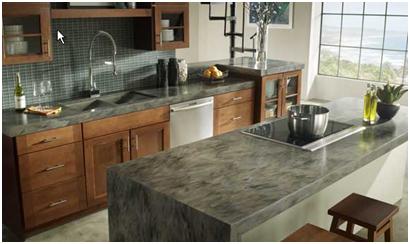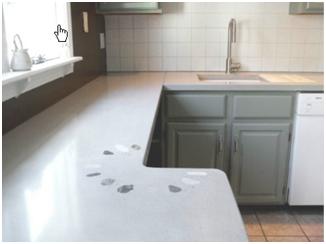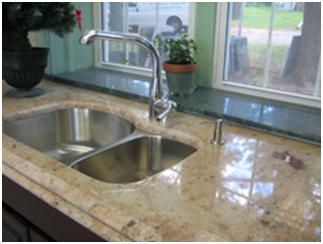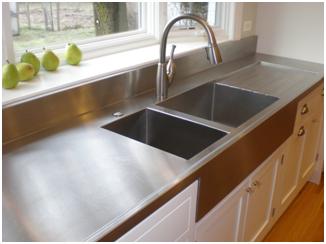Gotta Shovel Your Sidewalks–It’s Now the Law!
Just a reminder that starting this year, everyone in Massachusetts is legally required to keep their sidewalks clear of ice and snow. Many cities already had ordinances requiring landlords and homeowners to keep their sidewalks clear, such as in Cambridge, but now the state requires it.
The Cambridge city website states:
City Ordinance requires property owners to remove snow from sidewalks next to their property or business within 12 hours of daytime snowfall and before 1:00 pm when it has fallen overnight. They must also remove or melt all ice within 6 hours of the time it forms.
Attorney Rich Vetstein has a nice article on the new Massachusetts law on the Massachusetts Real Estate Law Blog, and the Boston Globe also writes about it in today’s edition. Note that in Boston, according to the Globe, “City Hall, however, still bears the ultimate responsibility for injuries that occur on those sidewalks, White said. For that reason, communities that compel residents to shovel the sidewalks have financial and legal incentives to enforce their ordinances.”
Popular Kitchen Countertop Material Overview
There are a lot of options available to you when selecting kitchen countertops. Natural stones are very popular, and can be both beautiful and durable. Some of the stone options can be quite pricey however. Manmade countertops range from inexpensive laminate to the industrial look of stainless steel. The final choice of material often comes down to a value-weighted evaluation of style, price, durability, and maintenance hassle.
Laminate
Laminate has been the practical, economical countertop choice for many decades. It comes in a wide variety of colors and patterns, including look-alike versions for more expensive options like natural stones. Decorative edge treatments are also available, but can raise the cost noticeably. The main drawback has always been durability, as laminate scratches fairly easily (although scratch resistance has improved in recent years) and can be quickly damaged by hot pots and pans. On the plus side, laminate can be quite stain resistant except for things like inks and dyes. It is usually glued onto an inch-and-a-half particleboard base, which means a cosmetic update using new laminate can be relatively quick and inexpensive. Particleboard is susceptible to water damage, however, so improper installation or water leaks can mean major damage. Cost is around $20 per sq.ft. installed.
Solid Surface
Solid surface countertops have been around for a while now (think Dupont Corian) and can be quite varied in color, design, edge treatments, and shape. One major advantage of this option is that the material is consistent in color and pattern throughout the thickness, which means scratches and other damage can be repaired using the proper scrubbing pad. Hot pans can scorch the surface, however, and improper installation near heat sources can result in cracks. Solid surfaces can stain as well, so things like wine and some sauces need to be cleaned up quickly. A very popular feature of solid surface countertops is the option of putting in sinks and backsplashes as an integral part of the countertop with no joints or seams. The sink is often given a different color/finish to create a nice visual separation. Cost is usually in the range of $60 per sq.ft. installed.
Wood
Wood undoubtedly owns the distinction of being one of the first kitchen countertop materials, but it’s still a viable option even with all the modern alternatives available. Wood can give a warm, natural feel to a kitchen that many proponents enjoy. Hardwoods like oak, cherry, maple, walnut, and mahogany are popular wood choices. Maintenance can be a little more involved, with regular mineral oil treatments recommended (especially near the sink – some design layouts even separate the sink with another material to avoid problems down the road). Although wood is sometimes thought to be less sanitary than other surfaces, manufacturers say this just isn’t true. If the surface is treated properly with non-organic oil, wood actually has inherent properties that prevent bacteria growth. Cost runs about $100 per sq.ft. installed, but can vary quite a bit.
Concrete
Concrete is a newer entry into the countertop field, but has become quite popular in certain areas. It can be stained almost any color and can be cast in unusual shapes relatively easily compared to other materials. Options such as integral sinks, backsplashes, and even imbedded objects are also available. Manufacturing know-how and proper installation are critical for concrete, as mistakes and inexperience can easily lead to visible cracks. Even one manufacturer might have a couple dozen formulas tailored to particular applications. Different sealants are available and getting better all the time, but most concrete countertops require frequent waxing (up to once a month). Sealants are necessary because concrete is naturally quite porous and will stain easily without care. Concrete countertops can also be quite heavy, but kitchen cabinets can generally handle the weight without any issues. Cost averages about $110 per sq.ft. installed.
Stone
Granite is the undisputed sales champ for natural stones, but other options include marble, slate, soapstone, limestone, travertine, and sandstone. Natural stones can vary drastically in color, pattern, and other unique features such as fissures, which is all part of the allure. Granite and other silica-based stones such as slate and soapstone tend to be more scratch and stain resistant than carbonate stones like marble, limestone, and travertine. The less durable stones can be easier to restore to like-new condition, however. Most stone countertops require the use of a sealant that must be reapplied every few years to protect the stone. Acidic foods like lemon juice are well known for causing stains, but this can usually be avoided by cleaning the counter reasonably quickly. Extremely hot pans can crack even the strongest stone, so it’s important to be careful when cooking. Stone countertops can also crack depending on many different factors such as installation, care, and the characteristics of the particular piece of stone. Scratches and chips can be repaired by polishing and resin injection, but it can be expensive depending on the damage. In general, however, stone countertops are very durable compared to other materials in they are cared for properly. Cost for natural stone can vary considerably, but most are in the neighborhood of $85 per sq.ft. installed.
Tile
Tile countertops can be a very attractive option given their relatively low cost combined with durability and ease of repair. Tile also opens up a world of design possibilities and creativity. While ceramic tile is often what people think of first in kitchens, many other materials such as marble, granite, and porcelain are available and can be a more affordable alternative to a solid version of the material. The main drawback to tile is the grout. Common issues include staining, chipping, cracking, and water penetration. Proper care in the form of frequent sealing of the grout can eliminate problems with stains and water but requires vigilance. Quality installation is important, but even the best jobs can succumb to settling floors and the occasional dropped pot. Stone tiles also have all the issues associated with their solid counterparts such as scratching, chipping, and staining. Tile is great for quick repairs, however, as the grout can be chiseled out and one or two offending tiles replaced with new ones (getting the grout to match perfectly after a repair can be a trick, however). Cost for tile also varies quite a bit, but expect to pay something like $40 per sq.ft. installed.
Stainless Steel
The king of the industrial kitchen, stainless steel also has many great features for the home. Durability is high on the list of positives, but stainless steel is just as often chosen for its clean style and contemporary look. Scratches and dents can be issues, but new brushed and textured finishes help with scratches and wood substrates or thicker gauge material can help prevent dents. Minor scratches can often be blended in with the proper abrasive pad as well. Stainless steel can also stain and corrode, but proper cleaning and maintenance should eliminate this problem. Welded-in integral sinks are also an attractive option. Cost is probably going to run in the range of $150 per sq.ft. installed, but complexity of the countertop can affect the value noticeably.
Gift Taxes
 Many times when younger people buy homes, parents get involved and assist with down payments and renovations. Sometimes it’s a big down payment as a wedding gift, or just a way for a parent to help their son or daughter settle down. Be sure to consult your accountant or attorney for any questions, as this is merely a brief overview.
Many times when younger people buy homes, parents get involved and assist with down payments and renovations. Sometimes it’s a big down payment as a wedding gift, or just a way for a parent to help their son or daughter settle down. Be sure to consult your accountant or attorney for any questions, as this is merely a brief overview.The Basics
- Each giver can give a specific receiver $13,000 per year. A married couple can give $26,000 per year to an individual.
- Each giver has a lifetime exclusion of $1,000,000, which is used up after one uses the $13,000. So if you give $23,000 to an individual in one year, then $10,000 is subtracted from your $1,000,000 lifetime exclusion.
How to Use the Gift Tax Exclusions
More Information
- Intuit.com has a great article describing the gift tax in depth, including why it’s created and how it relates to the estate tax.
- The IRS has several articles regarding the gift tax, including this Frequently Asked Questions section. Note that the official IRS Gift Tax publication was published 12/24/2009–be sure to check the IRS page or consult a professional regularly, as #s and rules can change every year.
4 Ways to Reduce your Rental Property Hassles
 Managing a rental property can sound like a hassle, but with some recalibration of your expectations, delegation of tasks, and setting up of a couple systems, you can be on your way to easier and simpler landlording.
Managing a rental property can sound like a hassle, but with some recalibration of your expectations, delegation of tasks, and setting up of a couple systems, you can be on your way to easier and simpler landlording.Liability–Set up an LLC!
Taxes–Have Separate Bank Accounts
Rent Collection–Use Automatic Deposit or Mail-in Deposit Slips
Repairs–Give your Tenants Permission to Call the Plumber

